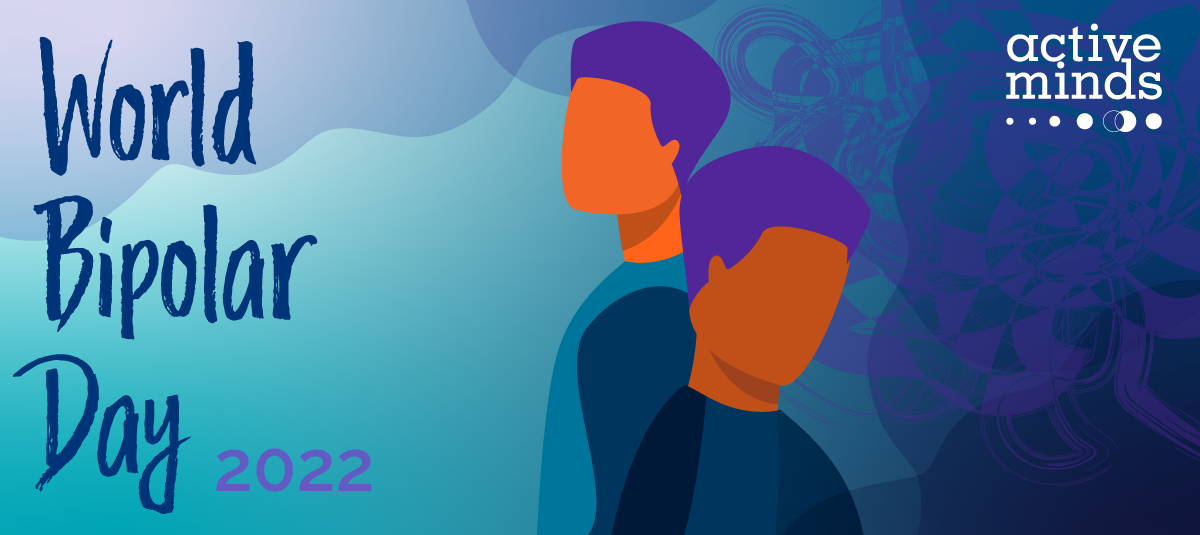Every day, I work with young people across the country, helping them to share stories that aren’t always easy to vocalize. They disclose their own battles with mental health, the ways they’ve seen loved ones struggle, and so much more. They sacrifice comfort and privacy to share their story to let others know they are not alone, and that hope is out there. As someone in their mid-twenties myself, I’ve seen the shift in culture around speaking out about stigmatized topics first-hand throughout my high school, college, and professional life, and am proud every time a student chooses to share their story and inspire others. Now, I’m doing the same.
I’ve lived with bipolar II disorder for much of my life, although I didn’t know it for quite some time. Bipolar disorder, while not discussed as frequently as some other mental illnesses, affects nearly 2.6% of Americans every year and that number is only growing. It is a brain disorder characterized by shifts in mood, energy, and activity levels. Typically these mood shifts range from highs (manic or hypomanic episodes) to lows (depressive episodes). There are three types of bipolar disorder:
- Bipolar I Disorder: Bipolar I is characterized by manic episodes that last at least seven days, or by manic symptoms that are so severe that the person needs immediate hospital care. Usually, depressive episodes occur as well, typically lasting at least two weeks. Episodes of depression with mixed features (having depressive symptoms and manic symptoms at the same time) are also possible.
- Bipolar II Disorder: As opposed to bipolar I, bipolar II is defined by a pattern of depressive episodes and hypomanic episodes that are not as intense or severe as the manic episodes that are typical of bipolar I disorder.
- Cyclothymic Disorder (also called Cyclothymia): Cyclothymic disorder is characterized by periods of hypomanic (a more mild form of mania) symptoms as well as periods of depressive symptoms lasting for at least two years (or one year in children and adolescents). However, the symptoms do not meet the diagnostic requirements for a bipolar I or II diagnosis.
The average age at onset for a first manic episode is during the early 20s. For me, it wasn’t a total shock when I was diagnosed at 18. Before I was diagnosed, I experienced intense mood swings and, retrospectively, extreme overreactions to everyday situations. I would swing from deeply insecure to super confident, and I had thoughts of ending my life and worthlessness coupled with bouts of creativity and excitement. I didn’t know what I was experiencing. My thoughts were conflicting and overwhelming, and I knew that I needed help. So, I opened up about my struggles to my fellow Active Minds chapter members and they helped me contact our college’s Counseling Center to set up an appointment. That appointment was the first step in learning more about bipolar disorder, as well as how to manage my day-to-day life in a way that was most healthy for me.
Even with medication and the coping skills I’ve learned, I still have mood cycles that are a bit irregular. In the last six years, I’ve had periods of depression and some prolonged periods of mania. I also tend to experience mixed episodes where I’m both severely depressed but with a lot of energy and restlessness. To be proactive in taking care of my mental health, I keep track of my moods so I’m able to address if I’m slipping into a depression or coming into a hypomanic period. The good news is that even though they still show up sometimes, the highs and lows aren’t as constant anymore. I now have periods where I just feel balanced. It’s taken hard work to get here, but it’s entirely worth it, and it’s possible.
Despite the difficulties it’s brought me, I can confidently say that being bipolar is one of my favorite aspects of myself. I am creative and enthusiastic. I am passionate and ambitious. I can fill up a journal with thoughts and ideas. I’ve learned to utilize my symptoms for the better. I’m not broken. Yes, I have to manage severe symptoms, but the amazing things I’ve experienced from being bipolar are things I choose to focus on when times feel hard. I hope no matter what you may be experiencing, you can do the same, and that if you feel alone in your struggles, you know that I am here with you.
If you or a loved one are struggling with bipolar disorder, resources are available.
Speak honestly about your symptoms with your doctor or therapist, and they can help you figure out a treatment plan. You can also find support groups and resources through the Depression and Bipolar Support Alliance and the National Institute of Mental Health. And if you’re having thoughts of suicide, you can call the National Suicide Prevention Hotline at 1-800-273-8255 or use their Lifeline Crisis Chat service. Both are available 24/7.




